6 Most Effective Salmon Fishing Rigs Used By Salmon Guides
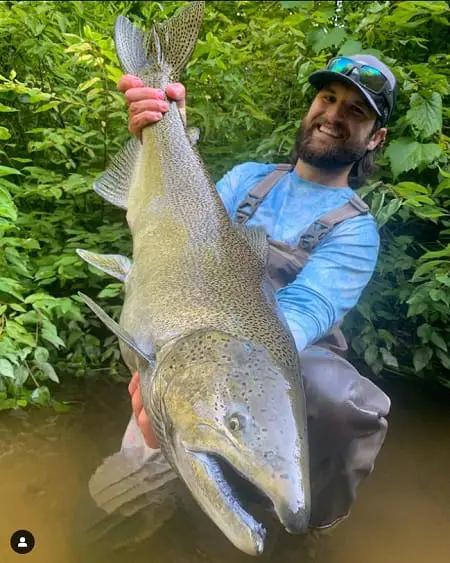
Top trout guides use these six highly effective salmon fishing rigs to maximize their clients’ success when using bait.
These salmon fishing setups are suitable for fishing still water lakes, ponds, reservoirs, small streams, and larger rivers.
As an experienced guide with over 20 years of expertise, I have extensively tested and used numerous rigs for salmon fishing. Many of these I’ve learned from fellow guides and skilled salmon anglers, and the ones I’ll share with you are the best of the best.
Additionally, I will highlight common rigging mistakes that unknowingly hinder anglers from catching salmon. By avoiding these errors, I and my clients significantly enhance our chances of landing fish.
The Key Components Of A Good Salmon Fishing Rig
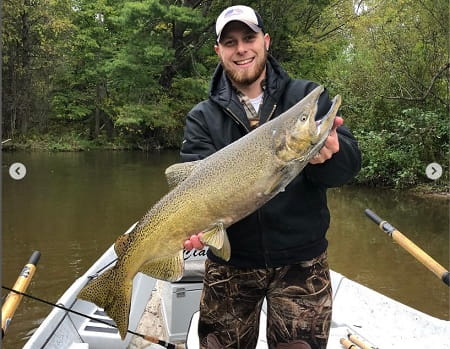
To achieve a successful rig, two essential elements must be carefully considered: the hook and the leader.
These components play a crucial role as they are what the salmon sees when it approaches any bait.
If either of these elements is wrong, the ability to catch fish will be compromised and maybe even to the point where catching nothing is possible, when I could have caught many had these things been perfect.
However, don’t worry, as I will reveal the specific hooks and leaders and the sizes that I use when I’m guiding.
Selecting the Right Hook For Salmon Rigs
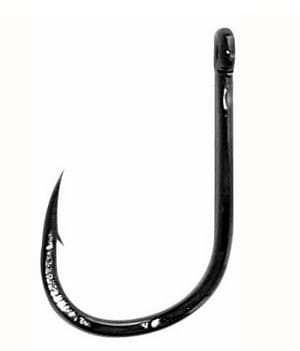
A high-quality hook should effortlessly penetrate the fish’s mouth during the hookset and maintain a secure hold throughout the fight. Unfortunately, not all hooks fulfill these criteria.
Some hooks, popular among novice anglers, are actually inadequate and prevent them from successfully catching salmon.
I see these hooks on the rods of anglers all the time, and when I see them, I know these anglers are not catching anywhere near the amount of salmon my clients are catching.
Using the wrong hook size in relation to the bait can also impede fishing success.
Fishing guides are very picky when it comes to selecting hooks. To provide their clients with the best chance of hooking and landing salmon, they rely on hooks that can efficiently penetrate the fish’s mouth and securely hold it during the battle. And they must be very sharp with a fine hook point.
Skilled anglers and guides opt for reliable short shank wide gap hooks such as the Raven Specimen or the Gamaktsu Octopus hook.
Choosing the Appropriate Hook Size
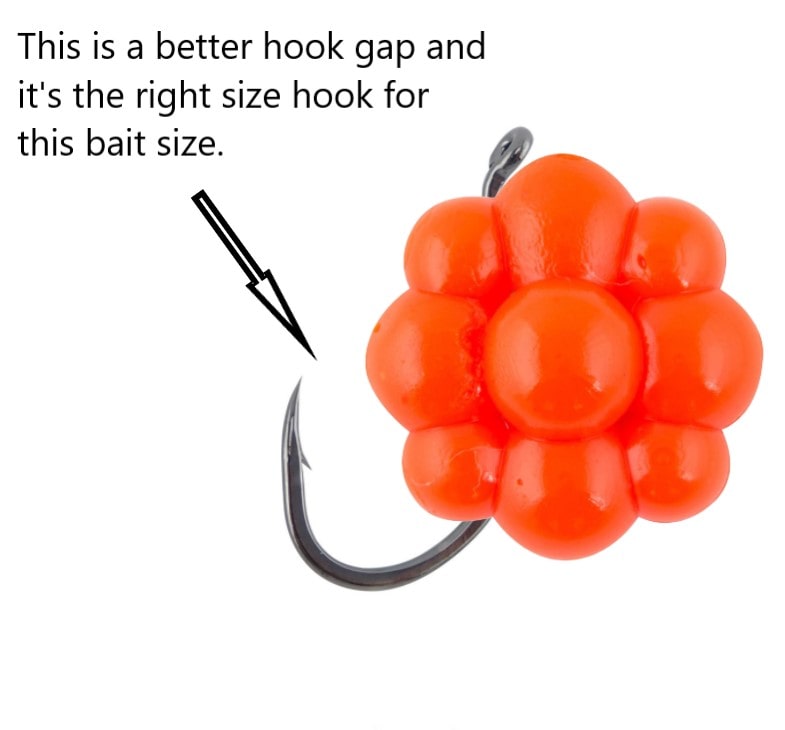
Choosing the appropriate hook size is also crucial to success with any fish.
An overly large hook is easily noticeable to the salmon, while a small hook may go unnoticed but fails to provide adequate penetration and grip on the fish.
I use the right-sized hook based on the size of the bait I am using. I need multiple-sized hooks ranging from size two to size ten when salmon fishing.
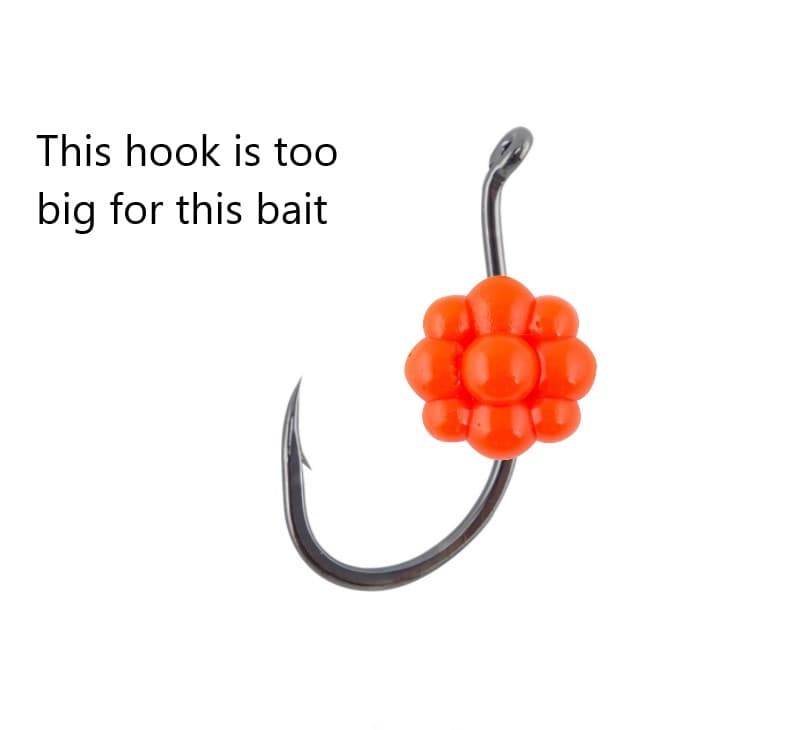
In the Great Lakes salmon region, sizes six to ten are perfect.
For West Coast salmon, where sometimes shrimp and large chunks of skein are used as bait, a size two hook might be sufficient.
I think most anglers use hooks that are too big because I’ve landed thousands of salmon between 25 and 35 pounds on hooks from size six to size ten.
Proper Bait Placement On The Hook
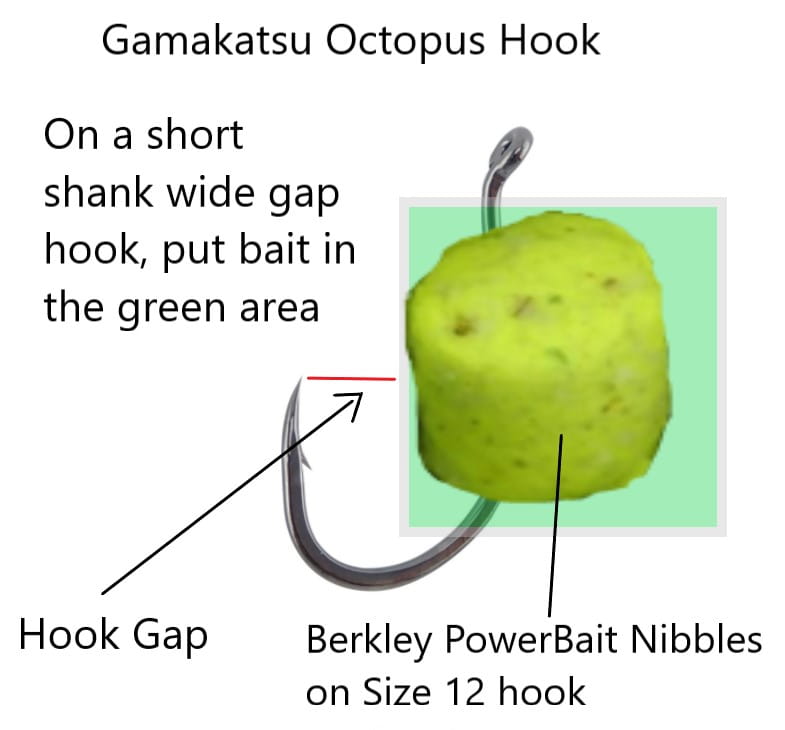
While having the right hook is crucial, improper rigging can diminish its effectiveness.
Unfortunately, numerous salmon fishing setups promoted online are incorrectly rigged, greatly reducing the chances of catching fish.
Drawing from years of experience and extensive trial and error, I can confidently state that covering the hook point or filling the hook gap is a big mistake for most baits.
By keeping the hook gap open and the hook point exposed, the fish often hooks itself, especially in currents. This simple adjustment can significantly increase your catch rate.
Appropriate Leader Size Salmon Rigs
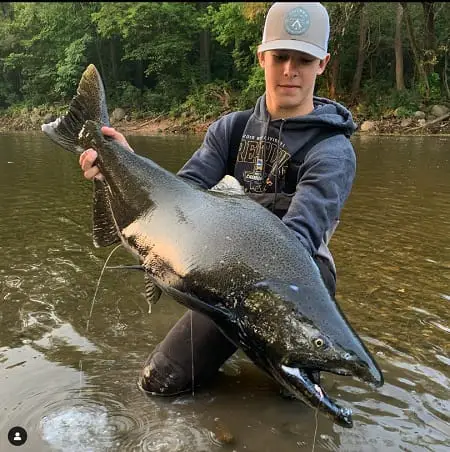
When referring to the leader size, I am specifically discussing the pound test, not the length. The ideal leader length for each setup can be seen in the diagrams provided below.
I use different leader strengths and lengths depending on the size of the salmon and the conditions of the river.
Through extensive testing under various conditions, I have found that the diameter of the leader line plays a significant role in fishing success. My general rule is to select a line that is thin enough to remain undetected by the salmon, yet strong enough to prevent break-offs.
Here are some basic guidelines for selecting the appropriate leader size:
Steelhead and Bass or large trout: Great Lake Region 6 to 10 pounds, with the ideal size being 8 pounds, and a diameter of 0.008 inches.
Steelhead – West Coast Region: 8 to 12 pounds, with the ideal size being 10 pounds, and a diameter of 0.009 inches.
Salmon: 10 to 16 pounds, with the ideal size being 14 pounds, and a diameter of 0.011 inches.
Most Effective Salmon Rigs
Allow me to provide a brief overview of the setups I employ for salmon fishing. It’s important to note that these setups are adaptable to various baits, including spawn bags, worms, minnows, shrimp, or any other bait.
These salmon rigs have been proven effective by myself, fellow guides, and experienced anglers, making them reliable choices.
Float Fishing Rigs For Salmon
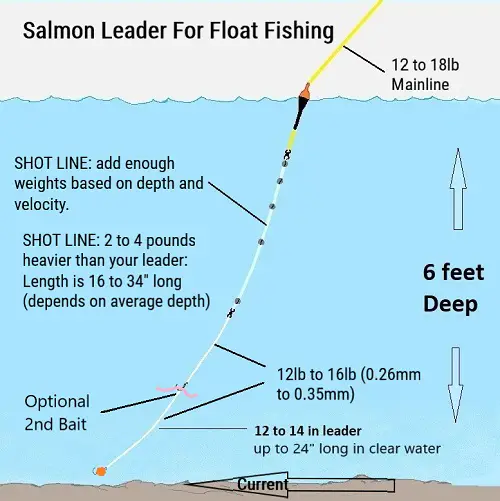
Float fishing is often the most effective method for salmon fishing in rivers deeper than three feet and less than fifteen feet deep.
Whether I’m fishing in lakes or rivers, I utilize the same setup.
In rivers, where longer rods ranging from 10 to 12 feet are preferred, I opt for a fixed float in water depths up to 12 feet.
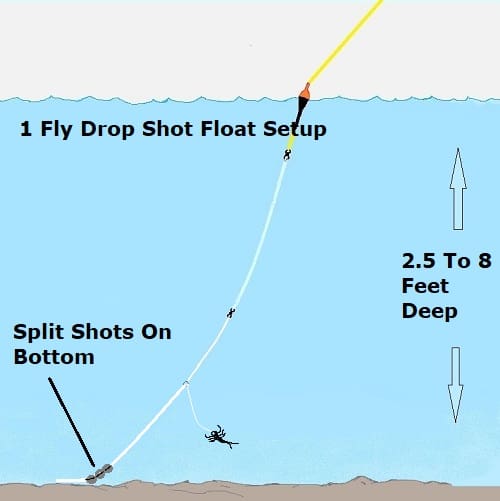

Drift Fishing Rig For Salmon

When fishing in large rivers with strong currents or deeper water, the drift fishing method proves to be highly effective.
This approach has yielded successful catches of salmon, carp, bass, and catfish.
Bottom Bouncing Rigs For Salmon


Similar to the drift fishing method, I employ this bottom-bouncing method in smaller and shallower sections of rivers.
It is particularly advantageous in shallow riffles, runs, small pools, and pocket water.
Still-Water Rig Used For Salmon Fishing: Plunking Method

This is known as the Plunking method is suitable for fishing in still waters such as lakes, ponds, and reservoirs. It can be employed to target salmon, trout, bass, carp, and catfish.
This setup is versatile, accommodating both daytime and nighttime salmon fishing. As salmon often exhibit increased activity during the night, still fishing can prove to be a fruitful strategy.
This is a very popular rig for shore anglers, which I discuss on my page salmon fishing from shore.
Bobber Doggin Rigs Used For Salmon Fishing

Bobber Doggin is a relatively new bobber fishing technique gaining popularity among anglers.
This method is applicable for fishing in rivers and can be utilized to target various bait-eating fish species found in currents.
Chuck N Duck Rig For Salmon

The Chuck n Duck fishing method is used to catch salmon around the Great Lakes when fishing in larger faster rivers that get deep quickly. The traditional Salmon Chuck n Duck rig uses a “Slinky”, or or some angler prefer a Pencil Lead, Drop Shot weights, or even spit shots on a dropper tag.
See all the Chuck N Duck rigs and learn this method at Chuck And Duck Fishing: A Complete Guide.
Tight Lines,
Graham
